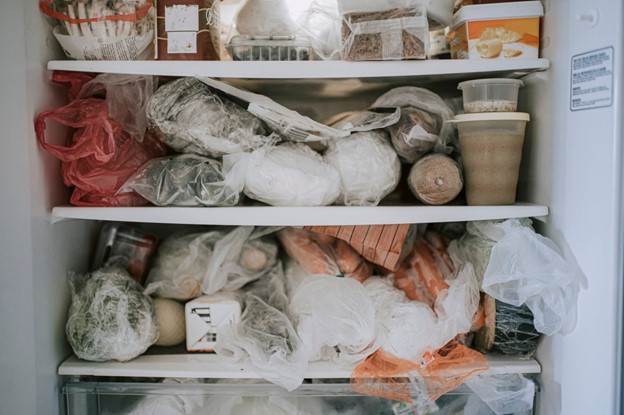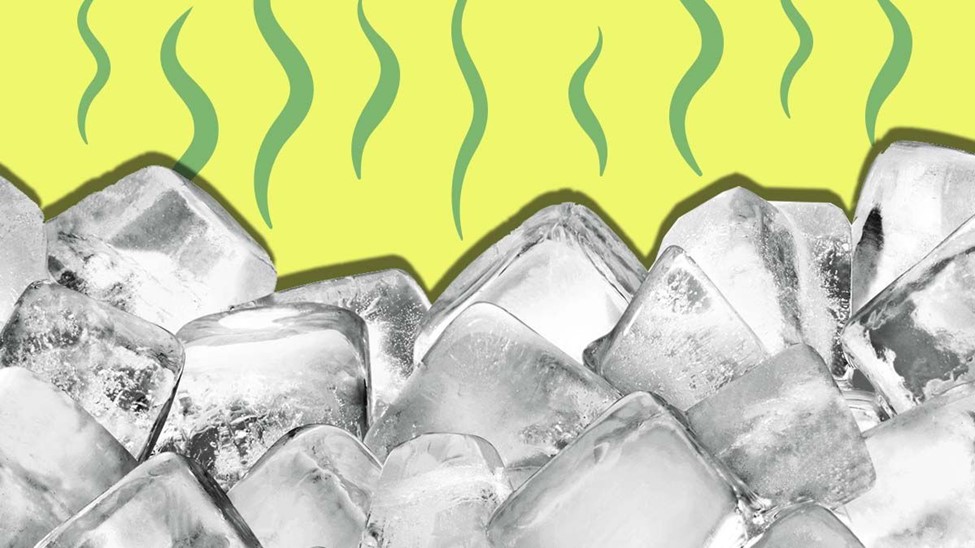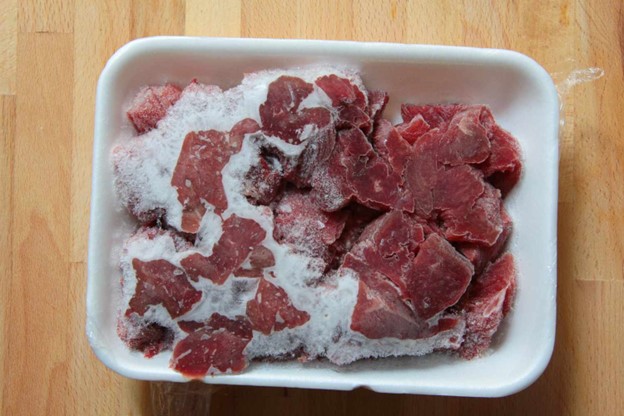Let’s DO This, So There’s NO MORE Senseless Food Waste!
I’m running out of freezer space. And this is sort of a big deal, since I need a place to put much of what I’ll be harvesting from our garden soon. Can you relate?

The obvious answer is to clean it out—toss some stuff. But don’t we all hate throwing food away? This is a chore where a little hand-holding could help. Turns out, Jillee, of www.onegoodthingbyjillee.com just happened to send this hand-holding my way last week.
So, if you can relate to this dilemma, read on. She simplifies the whole thing by explaining just what needs tossing and why:
SMELLY ICE CUBES. Once ice cubes have absorbed the scents around them, those scents are there to stay, and there’s nothing refreshing about a gulp of ice water that tastes like last week’s garlic! Toss those stinky cubes and start fresh.

Jillee suggests that if smelly cubes are a recurring problem, you might want to invest in ice cube trays with lids. They’ll help keep your ice smelling and tasting the way it should smell and taste: like nothing.
THAWED PROTEIN. There are a variety of reasons why this can happen, but if there’s any doubt, throw it out. And going forward, use a freezer thermometer to monitor the temperature patterns in your freezer to make sure the animal proteins you’re keeping there won’t make someone sick.
UNRECOGNIZABLE LEFTOVERS. Remember, they don’t last forever. If you’ve got some mystery leftovers in the freezer and you can’t remember what they were, it’s time to toss them out. And don’t forget to label things with the name of the food and the date you stored it. Using a freezer inventory is a smart way to avoid this issue in the first place.

ANYTHING WITH FREEZER BURN. Freezer burn is the most common freezer damage to be aware of. It leaves a nasty taste that just can’t be disguised. Ice crystals inside the packaging is a firm signal the item is burnt. Time to toss.
Tightly sealing food before freezing it is the best way to ward off freezer burn, as well as preventing the transfer of flavors and odors between foods. Jillee and I both recommend a vacuum sealer for that. AND by the way, minimizing how frequently you open your freezer door will help with the temperature fluctuations that can lead to freezer burn.

ICE-COVERED DAIRY. Whether it’s ice cream, yogurt, or milk, dairy items won’t hold up for more than one to three months in your freezer. And even though you can successfully freeze dairy products, the texture is likely to suffer.
The water in dairy tends to separate and create ice crystals, which is why frozen cheese, in particular, tends to be crumbly when thawed. Frozen cream cheese is a different story; if you stir it well with an electric mixer, it will return to its creamy state and be ready to use.
THINGS THAT SMELL “OFF” WHEN THAWED. Trust your nose; if something doesn’t smell right once thawed, it’s safest to throw it out. While t might not be harmful, it definitely won’t be tasty!

To conclude, the habit that’ll prevent most of the above? Dating foods and keeping an inventory list (and of course, remembering to look at the list). Let’s DO this so there’s NO MORE senseless food waste!

The obvious answer is to clean it out—toss some stuff. But don’t we all hate throwing food away? This is a chore where a little hand-holding could help. Turns out, Jillee, of www.onegoodthingbyjillee.com just happened to send this hand-holding my way last week.
So, if you can relate to this dilemma, read on. She simplifies the whole thing by explaining just what needs tossing and why:
SMELLY ICE CUBES. Once ice cubes have absorbed the scents around them, those scents are there to stay, and there’s nothing refreshing about a gulp of ice water that tastes like last week’s garlic! Toss those stinky cubes and start fresh.

Jillee suggests that if smelly cubes are a recurring problem, you might want to invest in ice cube trays with lids. They’ll help keep your ice smelling and tasting the way it should smell and taste: like nothing.
THAWED PROTEIN. There are a variety of reasons why this can happen, but if there’s any doubt, throw it out. And going forward, use a freezer thermometer to monitor the temperature patterns in your freezer to make sure the animal proteins you’re keeping there won’t make someone sick.
UNRECOGNIZABLE LEFTOVERS. Remember, they don’t last forever. If you’ve got some mystery leftovers in the freezer and you can’t remember what they were, it’s time to toss them out. And don’t forget to label things with the name of the food and the date you stored it. Using a freezer inventory is a smart way to avoid this issue in the first place.

ANYTHING WITH FREEZER BURN. Freezer burn is the most common freezer damage to be aware of. It leaves a nasty taste that just can’t be disguised. Ice crystals inside the packaging is a firm signal the item is burnt. Time to toss.
Tightly sealing food before freezing it is the best way to ward off freezer burn, as well as preventing the transfer of flavors and odors between foods. Jillee and I both recommend a vacuum sealer for that. AND by the way, minimizing how frequently you open your freezer door will help with the temperature fluctuations that can lead to freezer burn.

ICE-COVERED DAIRY. Whether it’s ice cream, yogurt, or milk, dairy items won’t hold up for more than one to three months in your freezer. And even though you can successfully freeze dairy products, the texture is likely to suffer.
The water in dairy tends to separate and create ice crystals, which is why frozen cheese, in particular, tends to be crumbly when thawed. Frozen cream cheese is a different story; if you stir it well with an electric mixer, it will return to its creamy state and be ready to use.
THINGS THAT SMELL “OFF” WHEN THAWED. Trust your nose; if something doesn’t smell right once thawed, it’s safest to throw it out. While t might not be harmful, it definitely won’t be tasty!

To conclude, the habit that’ll prevent most of the above? Dating foods and keeping an inventory list (and of course, remembering to look at the list). Let’s DO this so there’s NO MORE senseless food waste!
 Alice Osborne
Alice Osborne
Weekly Newsletter Contributor since 2006
Email the author! alice@dvo.com
